The memory of the neighborhoods of Madrid is not only their facades, they are also their people, customs and history. Because just as there would be Manolito Gafotas without Carabanchel Nor would the city be the same without its traditional Chamberí, its stately Retiro or its vertiginous Latina.
Elvira Lindo once said that “ loving the city is creating a neighborhood, claiming it daily ”. Buying in its markets, enjoying its streets and showing off secret corners can be the perfect formulas for reclaiming the neighborhood on a daily basis.
But also sharing a past and history where the protagonists are not the big names, but the anonymous faces that made each neighborhood the germ of a story with its own voice.
We rarely stop to think about the treasures that await in those family albums. Witnesses of a surname, they are also the reflection of a greater history. Because it is the citizens with their futures who make the communities, the neighbourhoods, the soul of a city.
Under the title Memory of the Neighborhoods: Compiling our memory, the Municipal Public Libraries of Madrid and the Memoria Digital Library of Madrid seek citizen collaboration to form a digital collection of images and documents that speak to us and discover Madrid through its neighborhoods and neighbors.
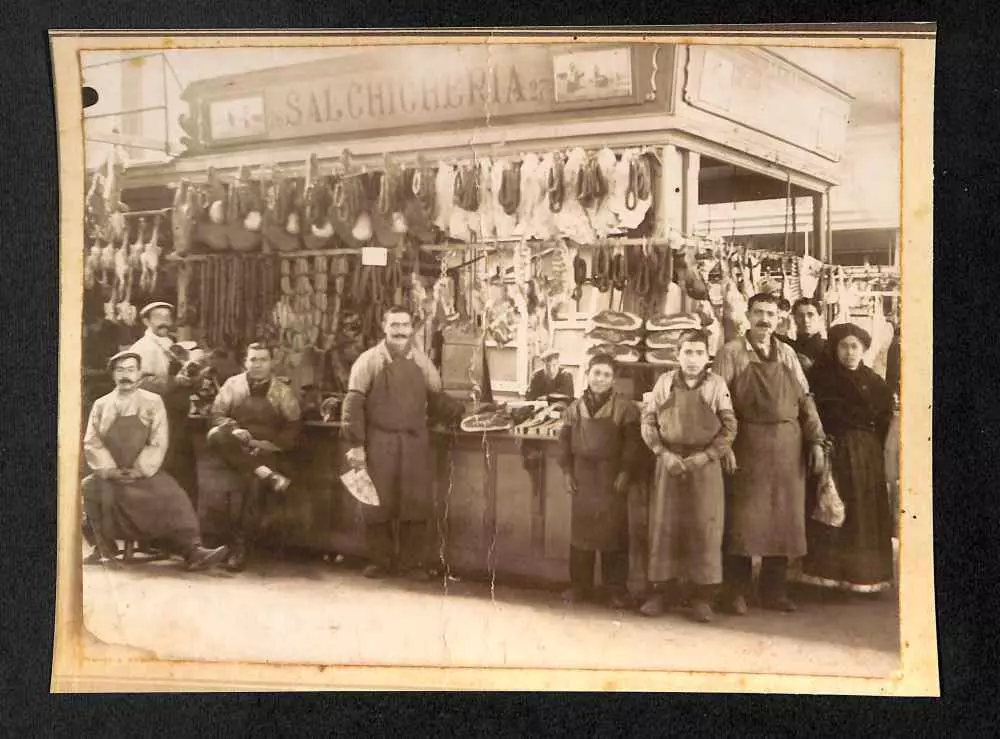
The Salchichería del Mercado de la Cebada (Madrid, 1910).
BRIDGE A GAP
Juan Ramón Sanz Villa, one of those in charge of the initiative and a worker at the Memoria de Madrid Digital Library, recounts that "Memoria de los Barrios began back in 2014 collecting images for exhibitions. But we saw that he ended up losing all that material . It was not left in the repository and, furthermore, what was published was still a selection".
So the team decided on an arduous task: to digitize everything that citizens sent it, "treating the images received the same as if it were a municipal fund, which allows relate them to other official documents”.
This "makes it obligatory to go to them if you want to reconstruct their history and evolution", describes an initiative that It goes beyond the mere collection of images.
Thus, by incorporating the digital version of the citizen's past into an institutional repository like any other document kept in Archives, Libraries and Museums, this project has gradually been shaped, which It already accumulates more than 3,000 visual testimonials.
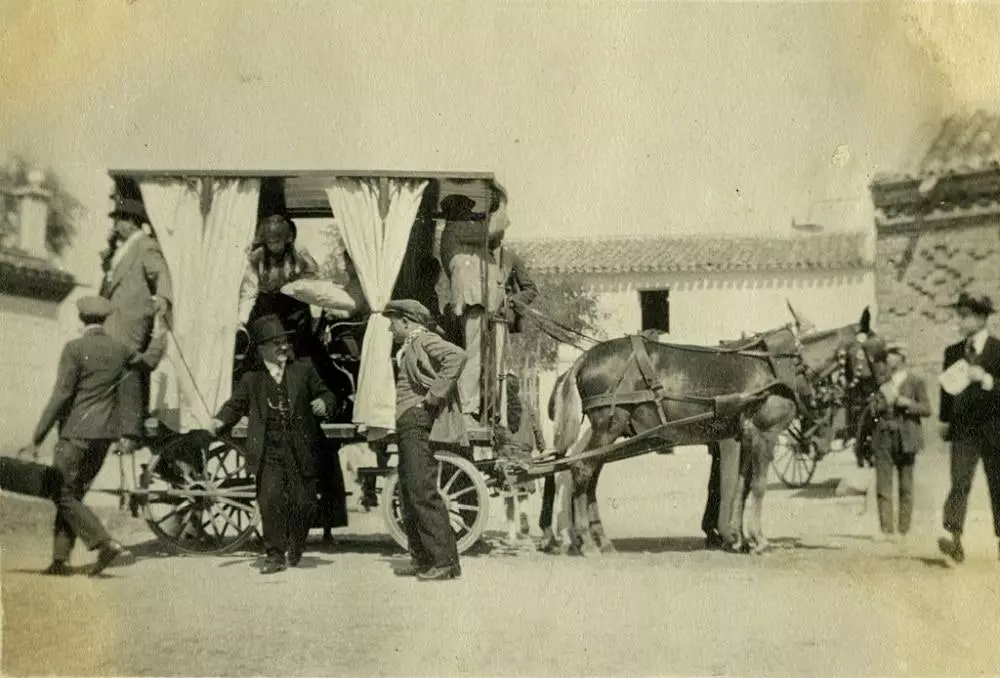
Diligence to Aravaca (Madrid, 1917).
"We were aware that there was a gap in the Archive, since many neighborhoods were towns that joined Madrid in the 1950s and we had few documents in this regard," adds Juan Ramón.
And precisely with Memoria de los Barrios, Madrid began to enjoy a clearer map. " Thanks to the citizens we have been able to obtain, for example, images of the Plaza de Toros de Carabanchel , which we hardly had, ”he adds.
That is why the team mainly requests information from the beginning of the 20th century, but it can be from any period. as long as it is at least 25 years old.
“Although we mostly ask for pictures, anything goes, really,” says the librarian. In fact, “they have brought us to a brick from the Carabanchel prison. It was given to a worker during the demolition. We also have ration cards, old subway tickets, magazines…”.
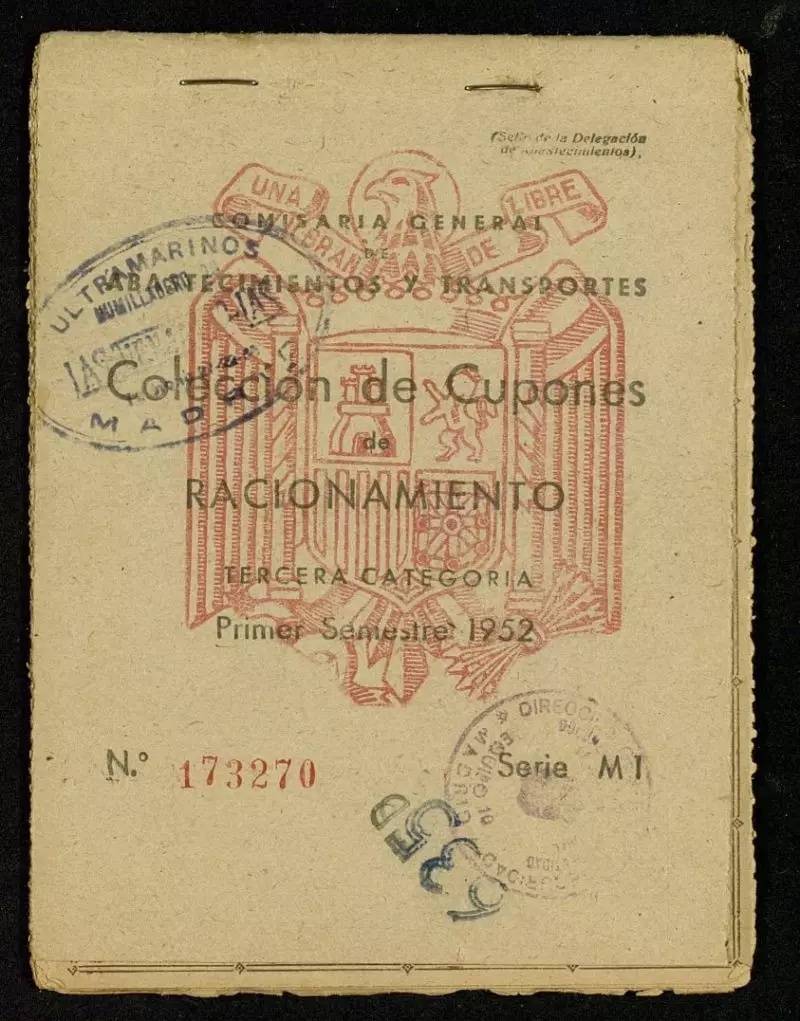
Ration coupons: Third category (1952). General Supply and Transportation Police Station. With the stamp of the Grocery Store on Humilladero Street, 20 26 p.
CUSTOMS AND HISTORY
Entering Memoria de los Barrios is synonymous with discovering how the city has changed, what the neighborhood festivals were like, family celebrations and even fashion trends!
In short, "things that citizens have or do not already exist." It's from rescue of family albums , mainly from the beginning of the 20th century, from which this collection receives more information. “When the owners die, there is a risk that the graphic document will be lost forever. And it's not just memories, it's heritage ”, says Juan Ramón.
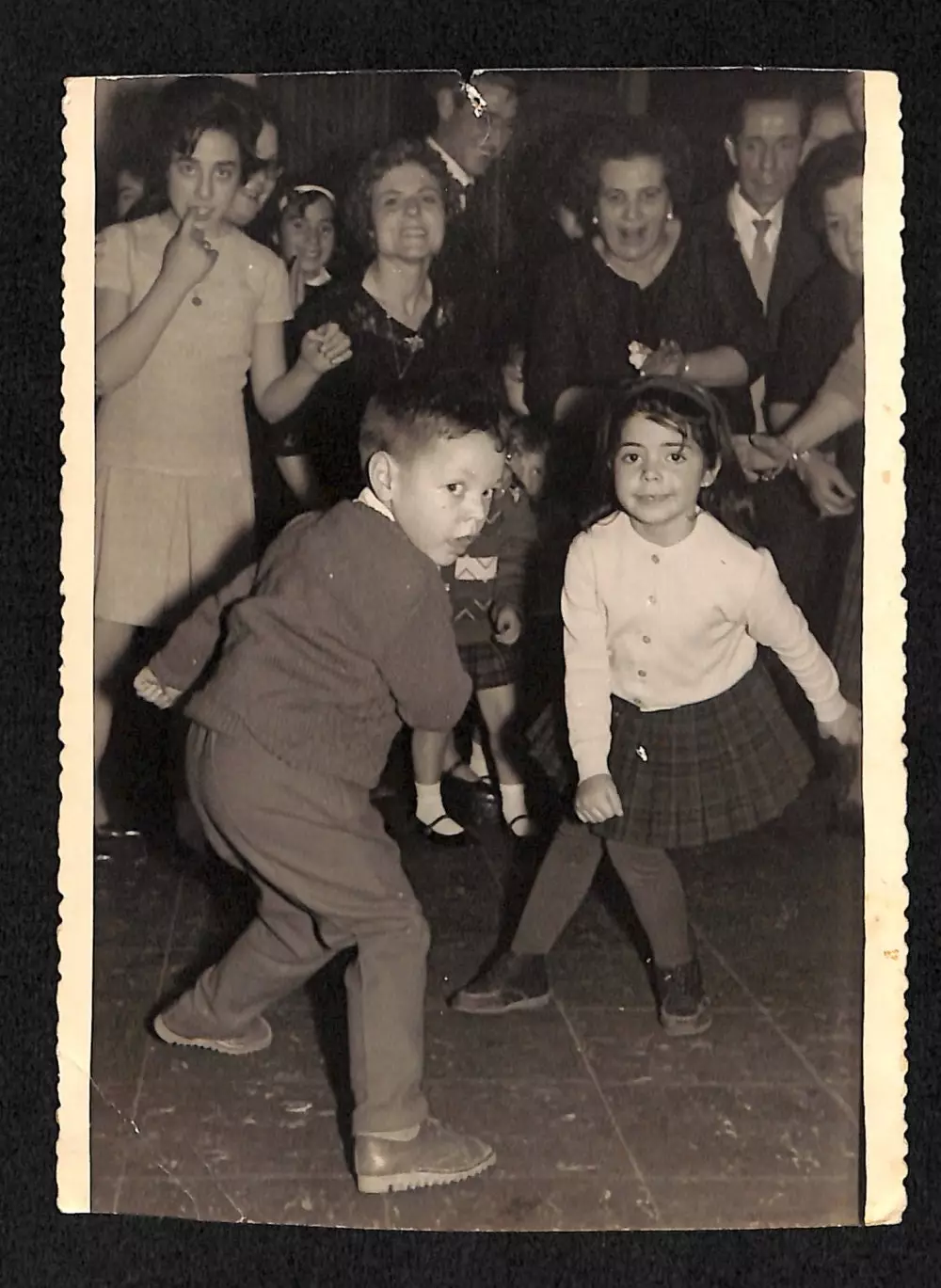
Children dancing the twist at a wedding (Madrid, 1966/1967). It can be read on the back: "PHOTO ORTEGA. WEDDINGS, BAPTISMS, REPORTS AND ORDERS IN BRAVO MURILLO 92. TF. 234-58-58. MADRID".
Also, “If there is a catastrophe, everything will be here, with a certain guarantee that they will survive” , he adds.
COUNT DUKE, HEADQUARTERS
With 14 people on staff at its headquarters located in Conde Duque, each library also contributes its grain of sand. Because the material can be given in any of the municipal libraries of the city.
Moreover, ”in Count Duke We even collect oral testimonies of neighbors who come to tell what life was like in the neighbourhood". They did it with Vicálvaro in the Planting of Memory initiative, which has made it possible to create a virtual map of how the neighbors saw their neighbourhood, which you can see at this link.
Because the present is fine, but it cannot be understood without its past. This is, without a doubt, an initiative that allows you to discover a city from multiple points of view. He is also clear about the equipment "that will be used for the study of professionals such as sociology."
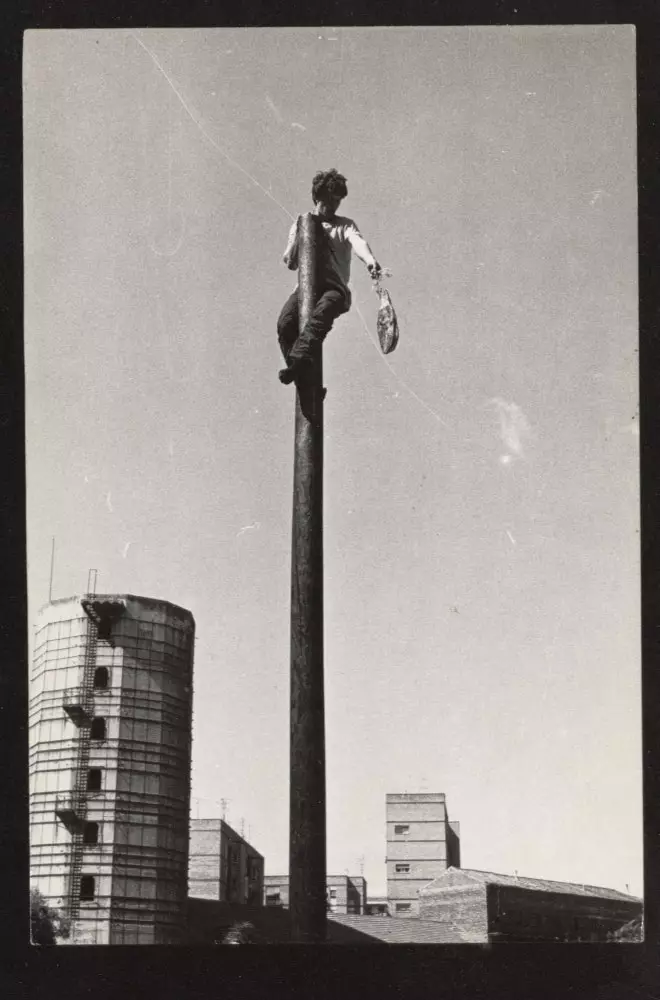
Game of the cucaña in the festivities of the Huerta de la Salud urbanization (Madrid, 1979).
About 3,600 images They are already part of this municipal fund that can be visited at any time on its website. "Social networks have been of great help", points out Juan Ramón.
In fact, “sometimes you see profiles with people who have real treasures. It makes us angry to see that it is something that can be lost”.
Among the images received we find one of the Royal Palace after the Civil War, “full of shrapnel impacts”, or of a family posing in front of the Edificio España under construction ", says Juan Ramon.
Although his favorites are those that have to do with a kermesse , the neighborhood party, “because in addition to being a lot of fun, people are always very happy. And no matter the neighborhood, the scene is the same ”, reminding us that, in the end, we are all neighbors from somewhere.
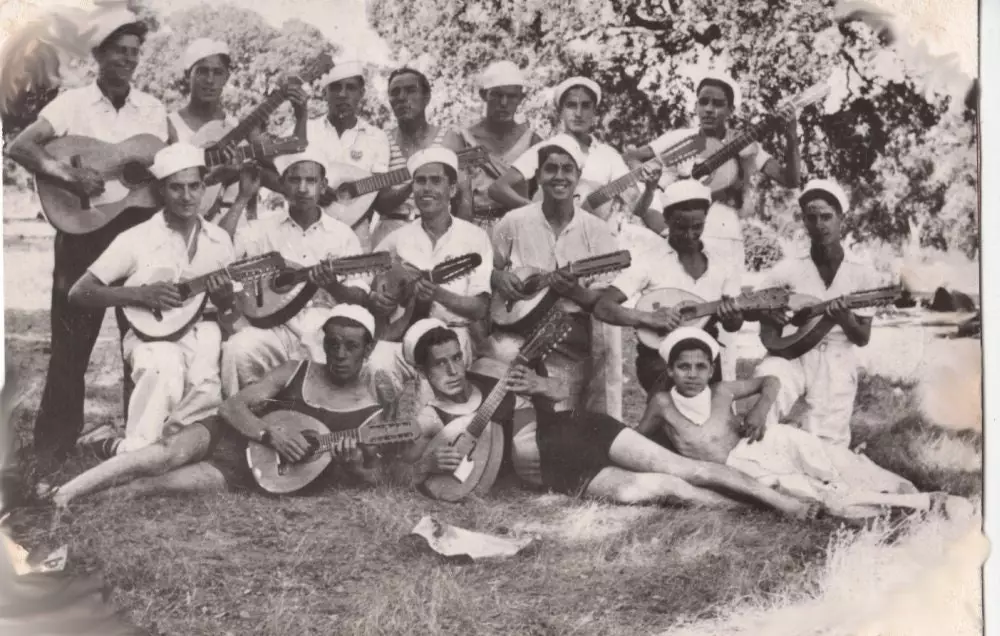
Young workers from Madrid with their bandurrias in the Casa de Campo in Madrid (1933).
NEIGHBORHOODS WITH SOUL
“We would like to have more post-war documents to put it in relation to the official archives that we already have in Madrid, which are very important”, Juan Ramón is sincere.
They also demand more active citizen help in some neighbourhoods, because "while Vallecas or Carabanchel have been very participatory, because they have a very great neighborhood awareness and are proud of it, also the Central District, Tetuán or Villaverde are lacking”.
Joining this initiative is simple. It is enough to go to a municipal library with the document in question so that it can be digitized. Or take it already in digital format. They have also made available to citizens a form to do so online.
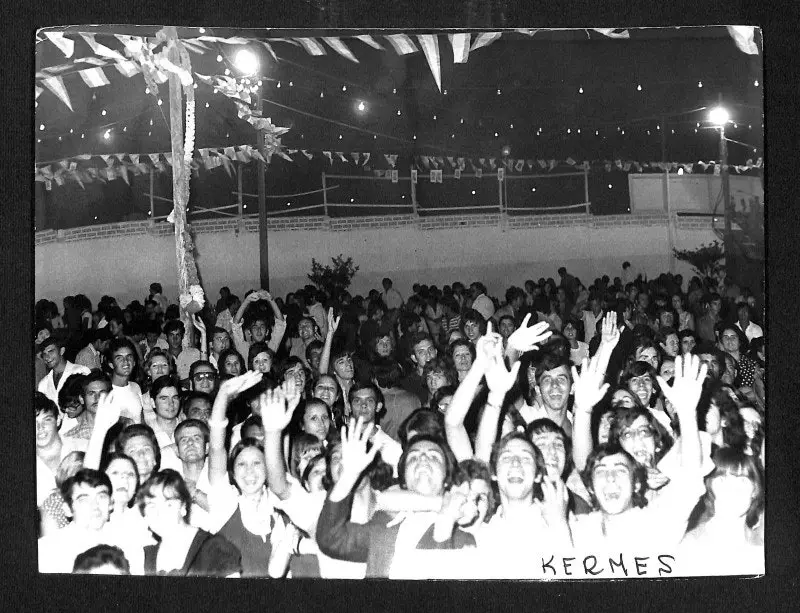
Residents of Vallecas at a Kermés dance (Madrid, 1970).
Yes indeed, intellectual property must be clear . "From the Civil War we had enough record, but the intellectual property was doubtful in many cases and we always want to make it clear who they belong to," adds the person in charge.
Together with an acknowledgment of their authorship and the impossibility of using them for commercial purposes, "we invite all Madrid residents to who contribute their memories to the collective memory”.
Right now, citizen contributions are collected and scanned in the following libraries:
- Huerta de la Salud (Sea of the Antilles, 9. Hortaleza)
- Pío Baroja (c/ Arganda, 12. Arganzuela)
- Conde Duque (c/ Conde Duque 9 and 11. Center)
- Iván de Vargas (c/ San Justo, 5. Centro)
- Francisco Ayala (Indalecio Prieto Boulevard, 21 in Valdebernardo. Vicálvaro)
- Miguel Delibes (c/ Arroyo Belincoso, 11. Moratalaz)
- Gerardo Diego) (Monte Aya, 12. Vallecas Villa)
- Well of Uncle Raimundo (Avda. de las Glorietas, 9. Puente de Vallecas)
- La Chata (General Ricardos, 152. Carabanchel)
- Ana María Matute (c/ de los Comuneros de Castilla, 30. Carabanchel).
- Through the submission form
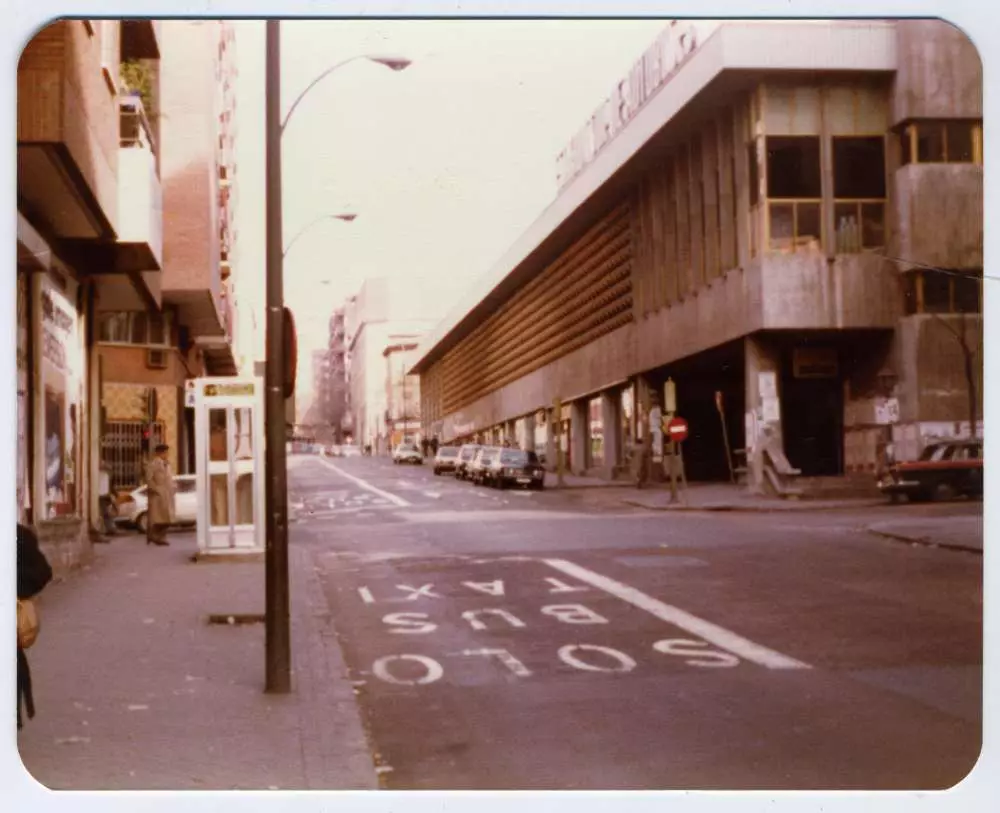
Former South Bus Station (Madrid, 1979).
